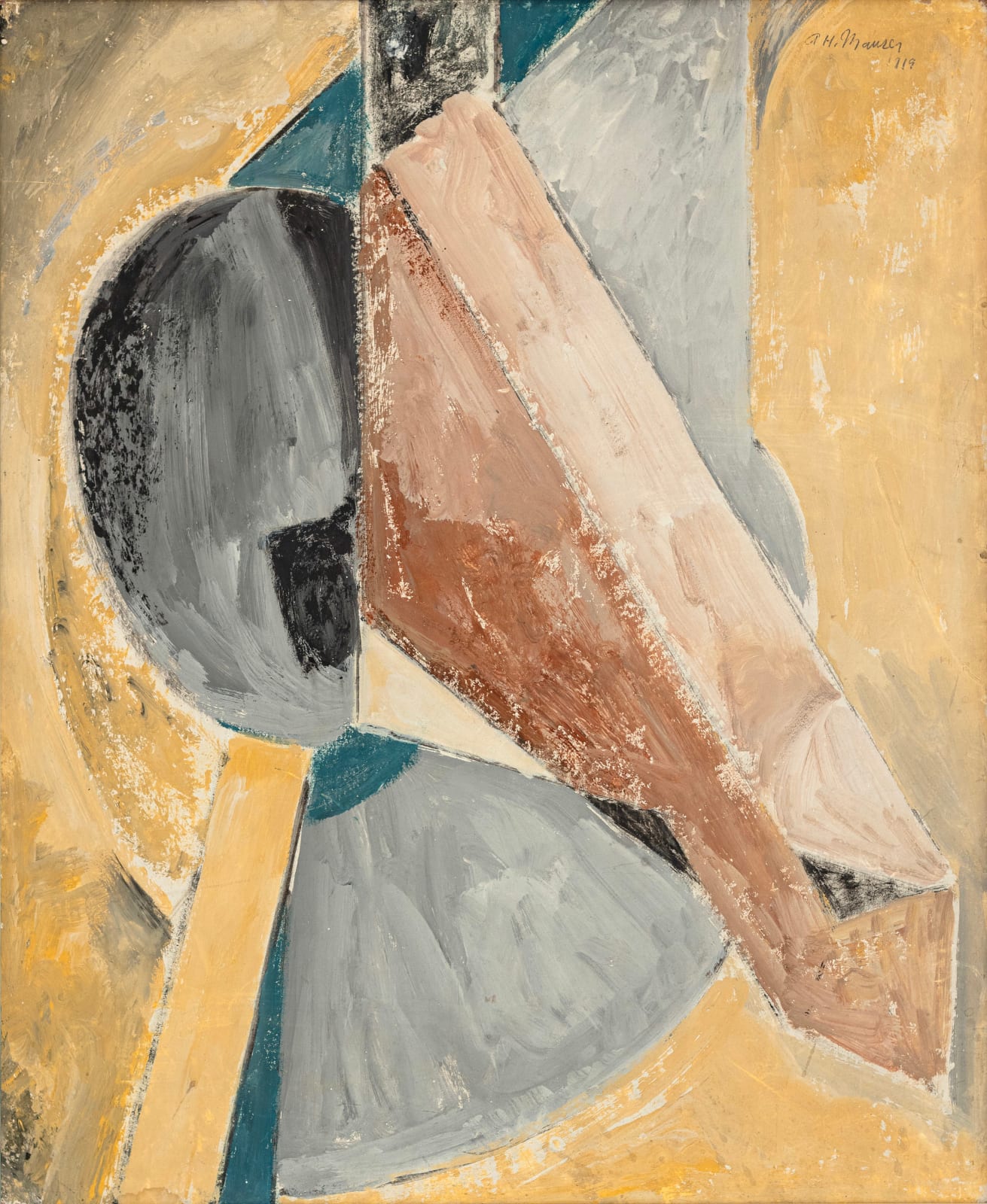-
Artworks
Alfred Maurer
Abstraction, 1919, 1919Casein on board22 x 18 inches
55.9 x 45.7 cmSigned and dated at upper right: A H. Maurer / 1919Among the first Americans to espouse novel European modernist approaches to painting, Alfred Maurer was directly informed by his exposure to avant-garde circles in Paris. Maurer developed a strong friendship...Among the first Americans to espouse novel European modernist approaches to painting, Alfred Maurer was directly informed by his exposure to avant-garde circles in Paris. Maurer developed a strong friendship with fellow American artist Arthur Dove over many years, having first met in Paris in 1907 and continuing their friendship after Maurer resettled in America. By the time Abstraction, 1919 was painted, Dove had helped shape Maurer’s aesthetic approach, encouraging him to take up pure abstraction. In addition to Dove, Maurer shared an affinity with other artists in the Stieglitz circle— specifically Georgia O’Keeffe and John Marin—who focused on the rhythms of nature through their own intuitive response as opposed to the prevailing American voice at the time based on industry and progress. These geometric abstractions from 1919 through the 1920s are significant in anticipating Maurer’s later Cubist experimentations.
Provenance
The artist; to
Ione and Hudson D. Walker, Minnesota;
The University Gallery, University of Minnesota, Minneapolis, 1953 until at least 1956;
[Babcock Galleries, New York]; to
[Robert Schoelkopf Gallery, New York]; to
Private collection, New York, 1967; to
Estate of the above, 2021
Exhibitions
American Federation of Arts, New York, Pioneers of American Abstract Art, December 1955-December 1956, no. 55-15 (Atlanta Public Library and elsewhere)
Babcock Galleries, New York, A. H. Maurer's Statement, January 8-February 2, 1963, p. 6, no. 4, illus.
Schoelkopf Gallery, New York, Modernism Rising, September 6-October 5, 2024
Subscribe to our mailing list to receive updates from the gallery
* denotes required fields
We will process the personal data you have supplied in accordance with our privacy policy (available on request). You can unsubscribe or change your preferences at any time by clicking the link in our emails.

